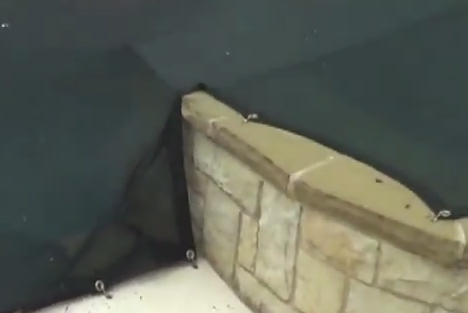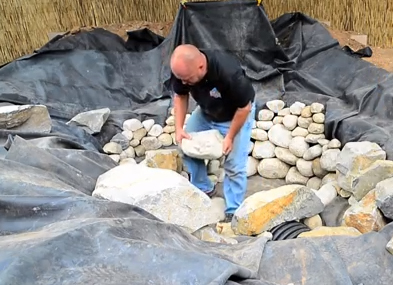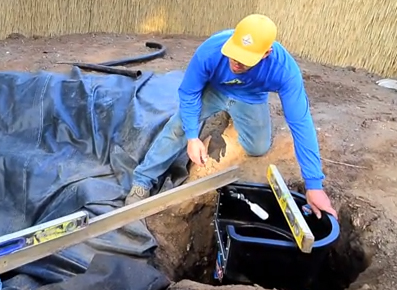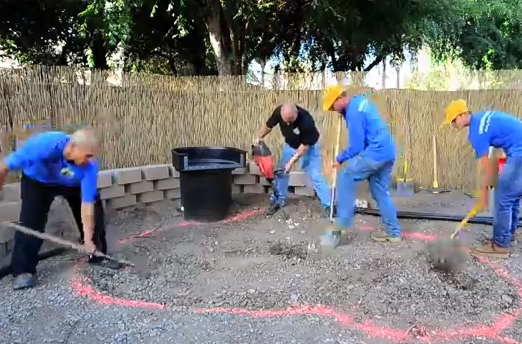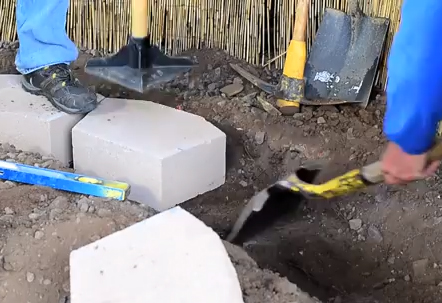installation
In large parts of the country, pool owners are happy that there's no need to winterize their watershapes the way it's typically done across the northern states: No need to shut down systems, draw down the water level and cover things up tight from October until March or April. In lots of warmer places, however, there's a benefit to adapting a component of those seasonal northern practices for the worthy purpose of keeping leaves in Texas or Florida or California from
In large parts of the country, pool owners are happy that there's no need to winterize their watershapes the way it's typically done across the northern states: No need to shut down systems, draw down the water level and cover things up tight from October until March or April. In lots of warmer places, however, there's a benefit to adapting a component of those seasonal northern practices for the worthy purpose of keeping leaves in Texas or Florida or California from
I've often seen rock placement described as an "improvisational art" by others who've written for WaterShapes, and I couldn't agree more. Once the liner's in place and it's time to dress it up with everything from large boulders to tiny gravel, I get the sense that this is less a construction task than it is an exercise in creative manipulation. You'll see some of that creativity on display in the two videos linked below, but what you'll also see is that experience really does count: In setting rocks in place, you end up handling and rotating and flipping and fine-tuning the positioning of dozens or hundreds or even
I've often seen rock placement described as an "improvisational art" by others who've written for WaterShapes, and I couldn't agree more. Once the liner's in place and it's time to dress it up with everything from large boulders to tiny gravel, I get the sense that this is less a construction task than it is an exercise in creative manipulation. You'll see some of that creativity on display in the two videos linked below, but what you'll also see is that experience really does count: In setting rocks in place, you end up handling and rotating and flipping and fine-tuning the positioning of dozens or hundreds or even
The task highlighted in the video linked below - that is, the process of setting and leveling the skimmer - is right up there at the top of the list when it comes to determining the success or failure of a pond-installation project. In fact, it may be the most important of all with respect to aesthetics, because it's what sets the pond's water level and has a huge amount to do with how things will look to people who approach the water's edge. We don't do the digging for this part of the installation until
The task highlighted in the video linked below - that is, the process of setting and leveling the skimmer - is right up there at the top of the list when it comes to determining the success or failure of a pond-installation project. In fact, it may be the most important of all with respect to aesthetics, because it's what sets the pond's water level and has a huge amount to do with how things will look to people who approach the water's edge. We don't do the digging for this part of the installation until
The task highlighted in the video linked below - that is, the process of setting and leveling the skimmer - is right up there at the top of the list when it comes to determining the success or failure of a pond-installation project. In fact, it may be the most important of all with respect to aesthetics, because it's what sets the pond's water level and has a huge amount to do with how things will look to people who approach the water's edge. We don't do the digging for this part of the installation until
All too often, do-it-yourself pond installers will jump the gun, apparently unable to resist the urge to start digging right away. My guess is that they want to get the intense labor involved in excavation out of the way, not to mention all of the grunting that comes with using a plate compactor. As the pair of videos linked below indicate, there comes a time when there’s no avoiding shovel and spadework – but it shouldn’t happen first. Instead, the installation process should begin with the
The key to good pond-filter/waterfall installation is making certain the area around the unit is well compacted, well supported and properly positioned. If you take care of all of those things, the system that drives the pond will be stable and offer trouble-free performance for many years to come. In this video, we look with special focus at one of the support systems we see as crucial to many of our successes – that is, a good retaining wall that will help keep
Making the transition from printed magazine to digital newsletter has been interesting, to say the least. I never thought I’d even think something like this, but there are so many advantages to the “new media” approach that I wouldn’t even consider doubling back to ink and paper at this point. One limitation that always bothered me in print, for example, was the fact that my art director and I had to select from among so many nice, wonderful, big photographs and crunch them down into tiny spaces. To be sure, we balanced the small ones with lots of large ones, but I can’t think of too many features in which I didn’t wish for extra










